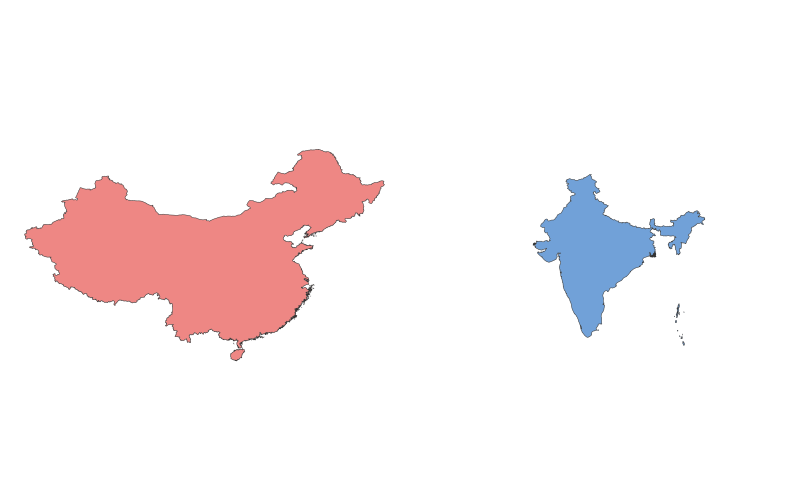China vs. India: A Geographical Comparison

Comparison Table
| Category | China | India |
|---|---|---|
| Location | Eastern Asia, bordering 14 countries | Southern Asia, bordering 6 countries |
| Size | ~9.6 million km² (3rd largest) | ~3.3 million km² (7th largest) |
| Climate | Diverse: tropical to subarctic | Tropical monsoon, arid in northwest |
| Natural Resources | Coal, rare earths, iron ore, hydropower | Coal, iron ore, bauxite, arable land |
| Urban Development | High urbanization (60% urban) | Moderate urbanization (35% urban) |
| Transportation | Extensive HSR, highways, airports | Growing rail network, congested roads |
Description
China
China, the world's most populous country, spans vast geographical diversity from the Himalayas to coastal plains. Its history dates back millennia, with dynasties shaping its rich cultural heritage. Economically, China is a global manufacturing hub, driven by exports and infrastructure growth. Major cities like Beijing and Shanghai reflect rapid urbanization, while rural areas retain traditional lifestyles. The Communist Party governs its centralized political system.
India
India, the second-most populous nation, features landscapes from the Thar Desert to the Ganges Delta. Its history includes ancient civilizations, colonial rule, and post-independence democracy. Culturally diverse with 22 official languages, India blends Hinduism, Islam, and other traditions. The economy mixes agriculture, IT services, and manufacturing, with cities like Mumbai and Bangalore as key hubs. India's federal parliamentary system emphasizes state autonomy.
Both nations face environmental challenges but are pivotal in global geopolitics and economic growth.